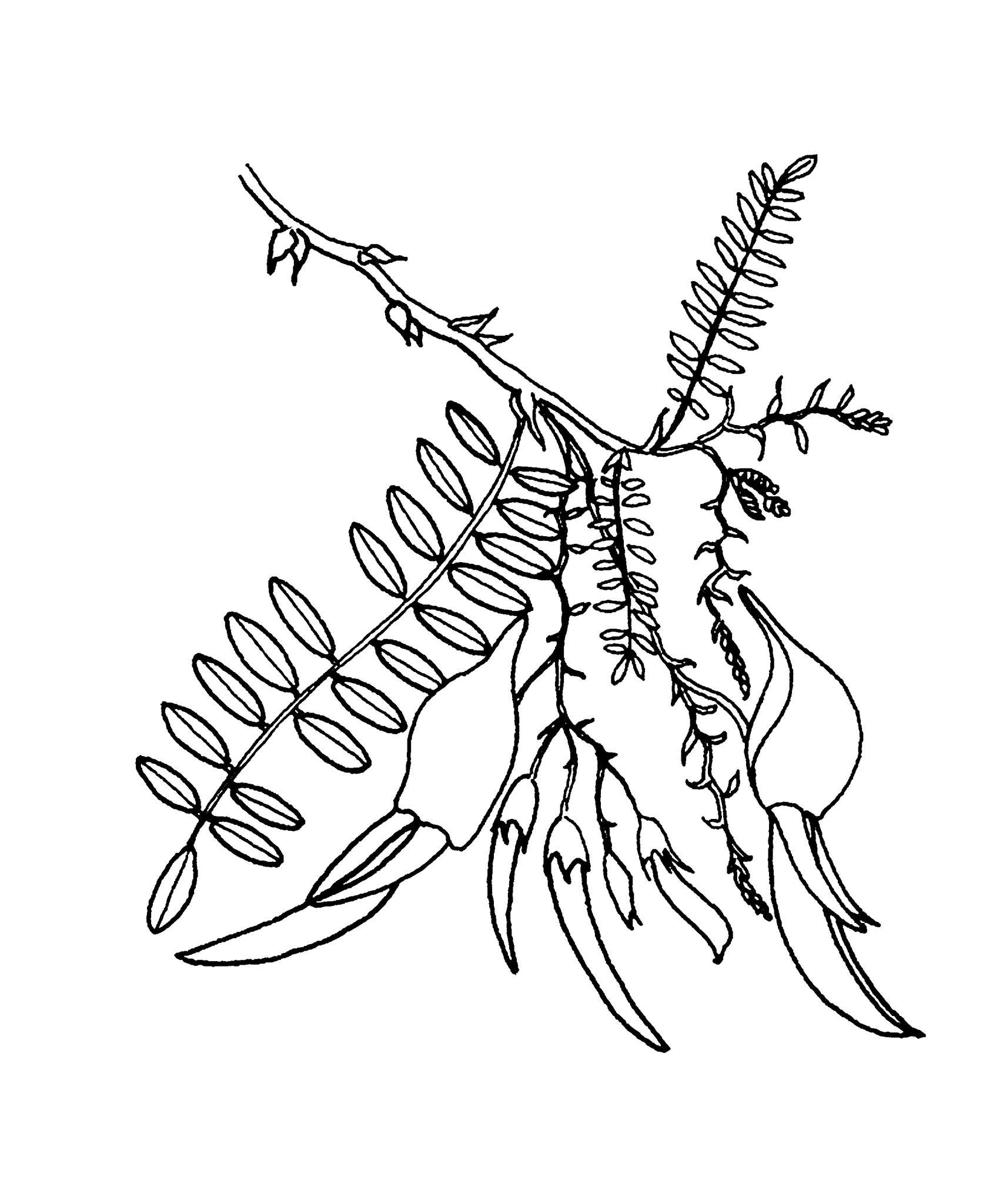
Woody shrubs. Leaves alternate, odd-pinnate, to 15 cm long, with up to 31 leaflets, each linear-oblong,1.5-2.5 cm long. Flowers in racemes of up to 15 flowers, each to 8 cm long, scarlet or white. Calyx 5-toothed. Standard about 6 cm long, reflexed, the wings shorter and keel equal or longer. Ovary short-stalked. Fruit pods cylindrical, to 8 cm long, containing numerous seeds.
Grown for the spectacular flowers.
New Zealand.
Source: (2002). Fabaceae. In: . Horticultural Flora of South-eastern Australia. Volume 3. Flowering plants. Dicotyledons. Part 2. The identification of garden and cultivated plants. University of New South Wales Press.

Flowers creamy white, suffused with green. Grows true from seed. Possibly originated from plants growing in the wild at Tiniroto on the n Island of New Zealand.
Various pink-flowered forms are grown under this name and vary in their shade of pink. Some variants have the keel and wings pinkish with the standard variously coloured, while in others most parts of the flower are pink. Collectively, they could well be regarded as a cultivar group. Seed-raised plants could account for some of the variation. In 1976 the New Zealand Nsy Duncan and Davies released several white and pink cultivars similar to those already listed under the names 'Albus' and 'Roseus'. One of these, 'Flamingo', is available in Australia. Sesbania Scop. is sometimes grown for the fine foliage and attractive flowers. It has pinnate leaves with a terminal point and long, thin pods containing numerous seeds. The most popular species is S. puniceus (Cav.) Benth. from n Argentina and Brazil, which is very similar to Clianthus puniceus but with drooping flower clusters, the individual flowers with a yellow basal spot. S. cannabina (Retz.) Poiret, Sesbania Pea, is a widespread native plant that is sometimes cultivated.